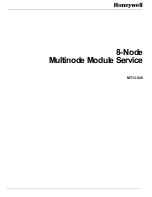
FibeAir IP-20C/S/E
User Guide
Ceragon Proprietary and Confidential
Page 356 of 597
eth group [lag2]> operational state show
Port operational state: up.
eth group [lag2]>
The following commands remove port 2 on slot 1 from the LAG:
root> platform if-manager set interface-type ethernet slot 1
port 2 admin down
root> ethernet interfaces group lag2
eth group [lag2]>
eth group [lag2]> port static-lag remove member interface eth
slot 1 port 2
14.4
Configuring XPIC (CLI)
Note:
This option is only relevant for IP-20C units.
This section explains how to configure XPIC and includes the following topics:
Configuring the Antennas (CLI)
Configuring the Radio Carriers for XPIC (CLI)
14.4.1
XPIC Overview (CLI)
Cross Polarization Interference Canceller (XPIC) is a feature that enables two
radio carriers to use the same frequency with a polarity separation between
them. Since they will never be completely orthogonal, some signal cancelation
is required.
In addition, XPIC includes an automatic recovery mechanism that ensures that
if one carrier fails, or a false signal is received, the mate carrier will not be
affected. This mechanism also ensures that both carriers will be operational,
after the failure is cleared.
To configure and enable XPIC, first configure the antennas and then configure
the carriers, as described below.
14.4.2
Configuring the Antennas (CLI)
To configure the antennas:
1 Align the antennas for one carrier. While you are aligning these antennas,
mute the second carrier. See Configuring the Radio Parameters (CLI).
2 Adjust the antenna alignment until you achieve the maximum RSL for the
first-carrier link (the “RSL
wanted
”). This RSL should be no more than
+/-2 dB from the expected level.
































